Starknet Analysis of the Advantages of the Full-Chain Gaming Ecosystem Development and High-Quality Projects
Starknet Analysis Advantages of Full-Chain Gaming Ecosystem Development and High-Quality ProjectsFirst launch ghost: 2023-08-15
After experiencing the death spiral of Gamefi, the market has turned its attention to the whole-chain game in 2023. Currently, Starknet is the most abundant ecosystem for whole-chain games. So why has Starknet gained the support of many whole-chain game projects? What advantages does it have in developing whole-chain games? And which projects deserve our attention? This article will explore these questions in depth.
For those who are not familiar with the whole-chain game as a whole, you can first read the previous articles by Uncle Jian, “Nine Questions about the Whole-Chain Game”.
Advantages of Starknet in Developing Whole-Chain Games
On social media, Starknet has gradually been labeled as the “most popular development platform for whole-chain games”. In addition to Loot Realms, which announced its migration from Arbiturm to Starknet in 2021, there are also many other whole-chain game projects such as Cartridge, Influence, Matchbox DAO, Briq, and Cafe Cosmos.
- Using Meme coin to launder funds from Rug Pull projects, revealing the true identity of the PEPE trader.
- Summary of the DeFi Market in the Third Quarter Three Major Narratives and Three Major Projects
- What is Neutron project Binance leads investment and token goes live after 4 months.
What advantages does Starknet have that many whole-chain games are going all-in? I believe the following points are worth mentioning:
Continuously expanding performance advantages (high TPS, low Gas)
Because in the whole-chain game, the blockchain is the game server, and all player operations need to be completed through interaction with smart contracts. Therefore, a blockchain that wants to develop the ecosystem of whole-chain games must meet the performance requirements of high TPS and low Gas. Starknet, which is constantly upgrading, has this potential.
From the perspective of underlying algorithms, the core algorithm STARK adopted by Starknet is more suitable for large-scale computing applications. Its average verification time and proof size will decrease as the verification scale increases. As shown in the figure below, when the number of hash invocations is 3072, the verification time is 40 milliseconds, with an average of 76.75 times/millisecond; when the number of hash invocations is 49152, the verification time is about 60 milliseconds, with an average of 819.2 times/millisecond, and the proof size is the same. Therefore, in creating large-scale whole-chain games, the advantages of the STARK algorithm are obvious, and high TPS can be achieved.
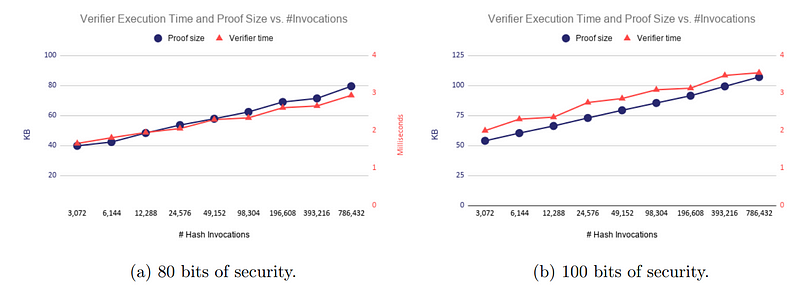
At the same time, the recursive proof used by STARK also helps to reduce the on-chain verification cost. In short, recursive proof can compress multiple “upstream” STARK proofs into one proof. In the end, the validity of multiple “upstream” proofs can be verified by only verifying the single proof generated by aggregation on the chain. This means that the Gas allocated to each transaction is further reduced.
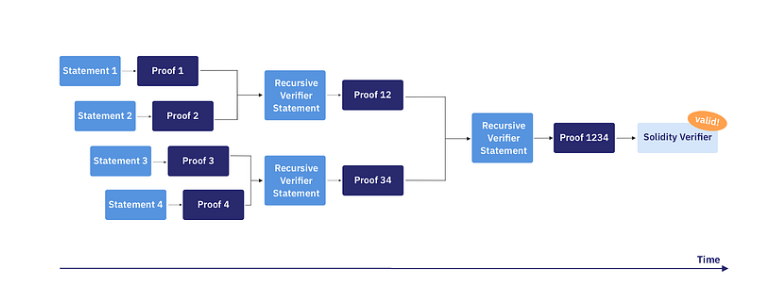
From the actual team actions, Starknet’s quantum leap upgrade is also in full swing. The mainnet has been upgraded to version V0.12.0, and the testnet has launched version V0.12.1, which has greatly improved TPS. The transaction cost will also be continuously optimized in the future.
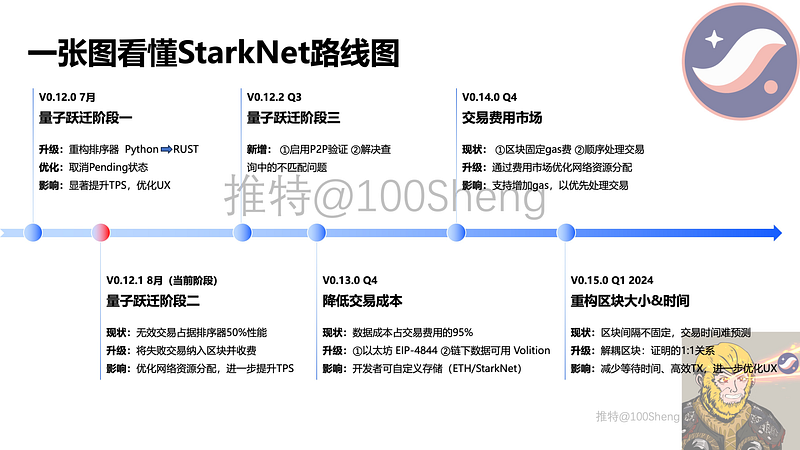
The Infinite Possibilities of Native Account Abstraction in Improving User Experience
If the requirement for blockchain performance is a factor that restricts the development of the entire chain game from a hardware perspective, then, from a user perspective, what restricts the development of the entire chain game is a worse user experience than GameFi.
Take the recently popular Loot Survivor as an example. Every time a user performs an “attack,” “escape,” or “upgrade” operation, they need to pop up their wallet for signature authorization transactions, which is quite cumbersome. Moreover, this is only a lightweight small game. If large-scale multiplayer online games on the entire chain have the same experience, then there is no need to further discuss playability.
So, how does Starknet solve this problem for entire chain games? The answer is native account abstraction. Different from Ethereum’s dual account model (EOA and CA) design, Starknet has only one type of account design called “account contract” and has implemented native account abstraction based on ERC-4337.
For those who are not familiar with the concept of account abstraction, you can read Uncle Mining’s previous article “Account Abstraction: Simplify Your Crypto World.”
Specifically, as an example, the session key, a creative feature jointly initiated by the Briq, Loot Realms, and Topology teams at the Starknet hackathon a year and a half ago, utilizes the native account abstraction design of Starknet, which allows users to sign every operation in the entire chain game without the need for signature.
This idea has also been applied this year. The arcade account developed by the Realms team on August 7th is the first implementation of the session key feature. In the demonstration video of Loot Survivor using the arcade account released by the Loot Realms team, it is also evident that it improves the user experience: no need to sign every “attack” and no need to wait for a long time.

Of course, the native account abstraction of Starknet brings more than just the session key function to the user experience of entire chain games. There will be more possibilities in the future.
Crypto Game Engine: Dojo
As we all know, the game engine is crucial for game development. With its support, developers do not need to create basic systems (physical simulation, graphic rendering, and basic game mechanics) from scratch for each game, thus being able to better invest the saved costs and time into innovative game content.
To some extent, the reason why traditional commercial games can develop so large is due to two major game engines: Unity and Unreal Engine. Most of the games we are familiar with, such as “Fortnite” and “Hearthstone,” are developed based on them.
From a developer’s perspective, in order to promote the formation of a scalable blockchain gaming ecosystem, there should be an engine that helps developers reduce the difficulty of game development. Therefore, in February of this year, the first blockchain gaming engine Dojo was officially launched on Starknet, jointly developed by Loot Realms, Cartridge, and Briq.

However, unlike traditional game engines, Dojo currently does not involve advanced features such as physics simulation and 3D rendering, because blockchain game development is still in its early stages and faces more problems related to interaction with the underlying blockchain. Therefore, according to official sources, Dojo is currently focusing on development in four directions:
- The first is to build L3 specifically for games to further improve on-chain performance;
- The second is to run fraud proofs in games, so that players do not need to wait for on-chain verification for every step, improving the smoothness of the game;
- The third is to execute partial proofs locally on the player’s side and only upload the critical ZK proofs to the chain, greatly improving the game’s performance and player privacy protection;
- The fourth is to use storage proofs for shared assets. Storage proofs are similar to oracles as they provide evidence of information authenticity without the need for third-party intervention. Ownership of assets from different chains can be proven through storage proofs, and users will be able to use their assets in different games on different chains.
As the infrastructure for game development, game engines have always played a crucial role in the virtuous cycle of “helping developers build games – creating hit games – attracting more developers.” It is believed that with the development of Dojo, the advantages of Starknet’s blockchain gaming ecosystem will become more and more apparent.
Cairo: a programming language friendly to complex blockchain game development
In fact, before Dojo, there was another big brother in the blockchain gaming engine space: MUD, and in terms of both ecosystem size and technical maturity, MUD currently dominates Dojo.

So why do we still need Dojo? One major reason is that, unlike MUD which uses the Solidity language, Dojo uses Cairo, a programming language that is more friendly to complex blockchain game development.
Cairo is a smart contract language designed based on STARK and exclusive to Starknet. Cairo, like a coin, has two sides. Although Cairo has a certain learning curve for developers who are used to Solidity, it is more modern compared to Solidity. Many developers consider it similar to the Rust language and believe that it can provide more advanced and abstract functionality.
For example, the features mentioned earlier such as generating STARK proofs, reducing on-chain verification costs, and executing partial proofs locally on the player’s side are all implemented through Cairo. At the same time, Cairo is more versatile than Solidity. It is not only suitable for contract development on Starknet but can also run provable programs on other large servers or personal devices, with broader applications in the future.
Therefore, for complex full-chain games such as large-scale multiplayer online games, Cairo will have a stronger advantage. This will also attract more developers to Starknet to realize their complex and highly playable full-chain game dreams.
Notable Projects
Having understood the advantages of Starknet in developing full-chain games, let’s take a look at some notable projects in the current Starknet full-chain game ecosystem.
Loot Survivor
Loot Survivor is a lightweight game launched by Loot Realms and is currently running on the Starknet testnet.

- Play to Die Mode
Unlike the various “X to Earn” modes used in GameFi, Loot Survivor adopts the “Play to Die” mode designed by the Loot Realms team. Simply put, players need to spend a small amount of funds to forge an on-chain adventurer character. If the adventurer dies in the game, the character’s life will be confiscated, and the player needs to create a new character and start the game again. Currently, there is no appropriate Chinese translation to vividly express this mode. The author tentatively translates it as “Never Give Up” or “Fight to the End”.
Compared with the “Play to Earn” mode that attracts greedy players by creating wealth effects, the “Play to Die” mode is more sustainable and can thrive the creator ecosystem. In this mode, if the adventurer dies in the game, the creator of the game will receive a dividend of the funds used to forge the adventurer in the first place.
Therefore, in the “Play to Die” mode, the quality and popularity of the game will determine the developer’s rewards. If the game is not fun, players will not forge on-chain characters, and game developers will not receive rewards. This mode will help create a positive, prosperous, and bilateral market that includes players and creators.
After Loot Survivor goes live on the mainnet, it may use its native token $Lords to forge on-chain characters and empower its token.
Influence
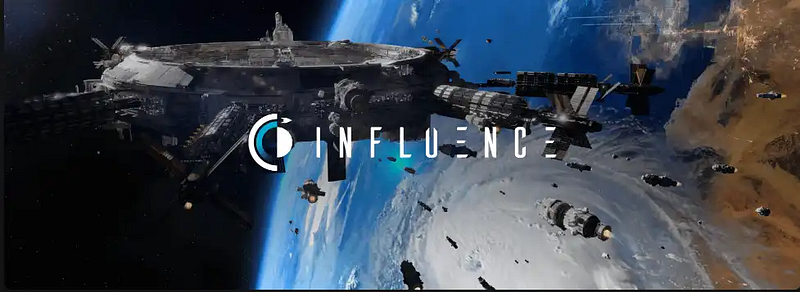
Influence is the most popular large-scale multiplayer online space strategy game on Starknet and is currently running on the testnet as well. According to the design of this game, players can colonize asteroids, build infrastructure, accumulate resources, and fight against other players. However, overall, this game is not as easy to operate as Loot Survivor, and I encountered many issues during the experience process.
- Team Situation
Founder Chris Lexmond has served as CTO and VP of Technology for several tech startups, and other members of the team also have professional backgrounds in producing AAA games. As a startup team, they are promising in terms of team capabilities.
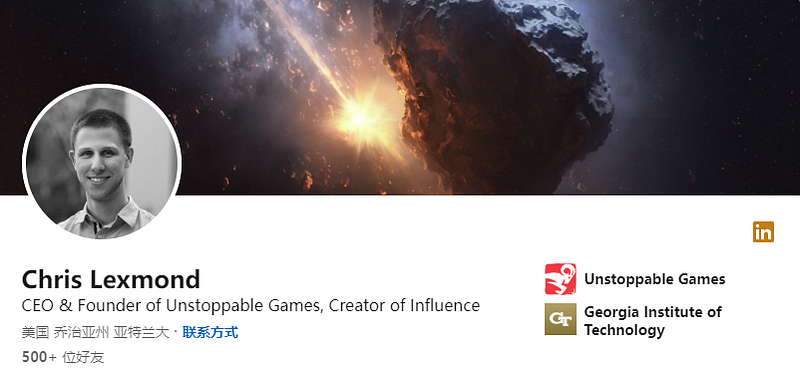
At the same time, the project team has stated that when their native token SWAY is issued, 1% will be used to reward participants in the test network.
Briq
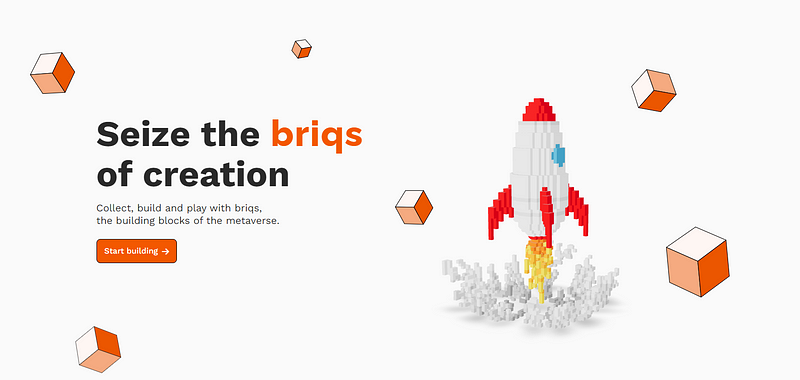
Briq can be likened to an on-chain Lego system, where players can freely use blocks to build their desired structures and can also cast their own models into an NFT. If you want, you can also combine or disassemble the cast NFT, giving it a high degree of composability.
Briq actually has great potential. It is more like a fundamental protocol that can be combined with a full-chain game in the future, allowing users to use the NFTs cast on Briq in the game.
Cartridge

Cartridge is a full-chain game integration platform on Starknet, which players often compare to the Steam platform for full-chain games. However, it does much more than just serve as a game integration platform. Its developed Cartridge Controller not only helps full-chain games easily go on-chain but also improves players’ gaming experience. It has participated in the development of the full-chain game engine Dojo and created its own full-chain game Roll Your Own (RYO).
Cartridge completed its seed round financing in June 2022, with investors including Fabric Ventures, Valhalla Venture, and Chapter One. It is believed that Cartridge, with its multi-dimensional approach, will play an indispensable role in the future full-chain game ecosystem of Starknet.
Of course, in addition to the above four, there are many promising full-chain games on Starknet. Interested friends can refer to the table below. Due to space limitations, I will not go into detail here.
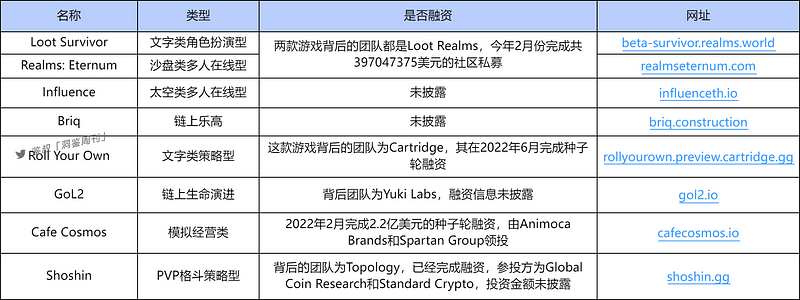
Summary and Reflection
At this year’s ETHCC, Will Robinson from AllianceDao raised four issues that restrict the development of full-chain games: UX/UI Problems, Uncertain How to Scale, No Standard Design LianGuaitterns, and Uncertain Value-Add.
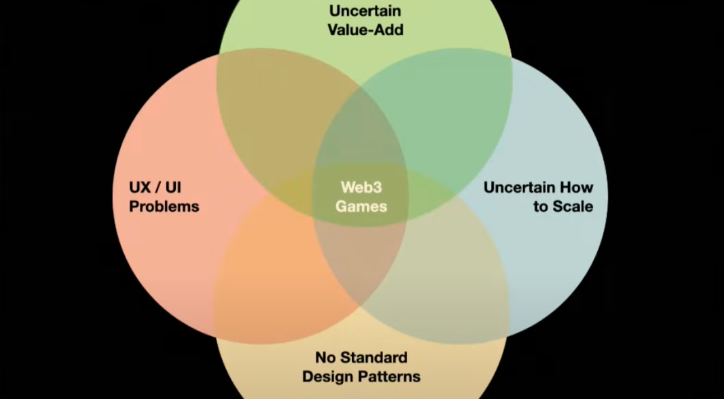
Based on the advantages of Starknet in developing full-chain games mentioned earlier, it can be seen that the first three issues raised by Will Robinson can be effectively resolved in the future. But regarding the last issue, whether full-chain games really have value or not, is still uncertain. It is well known that blockchain solves the problem of asset ownership and the establishment of an economic system in the virtual world. So besides putting in-game assets on-chain, do we really need to move the entire game operation onto the blockchain? Does this really make sense for players? This is not just a problem faced by Starknet alone, but a problem that all participants in the full-chain game ecosystem face together.
At the end of the article, the author wants to break away from Starknet and try to answer this question. First of all, it is not reasonable to assume that the full-chain game is justified just because it is beneficial to innovation. Such a reason has obvious logical flaws. Just as I was pondering over it, I accidentally came across a story about Vitalik that inspired me.
When Vitalik was young, he was obsessed with playing “World of Warcraft”. But later, he completely abandoned the game because Blizzard modified some characters’ skills for the sake of game balance in an upgrade, which made Vitalik quite angry. After several unsuccessful attempts to contact Blizzard’s engineers via email, he decided to never play the game again. At the same time, he also realized that there was a serious centralization problem in traditional games, and players had very little say.
Of course, in recent years, players’ voice and freedom in traditional games have been continuously increasing, thanks to the popularization of the user-generated content (UGC) concept. However, such freedom is still not enough. Players need real game autonomy. I think this is the opportunity and significance of full-chain games.
Full-chain games can take UGC to a whole new level. They only build immutable core gameplay on the blockchain and maximize the transfer of game design to players, allowing for unlimited creativity. Taking the full-chain game Dark Forest as an example, as long as players follow the most basic rules, they can do whatever they want. For example, they can create their own asset trading markets in the game, develop tools to automate their gameplay, or even create new games within the game. Currently, there are nearly a hundred Dark Forest plugins available, which players can use to visualize opponents’ territories, automate wars, and facilitate trades.
However, this is not the final state of full-chain games, as the above operations can only be achieved by people with coding knowledge. But I believe that in the future, ordinary players will also be able to build anything they imagine in full-chain games.
Because of belief, we see.
Disclaimer: All content on this site may involve project risks and is for educational and reference purposes only, not constituting any investment advice. Please approach it rationally, establish the correct investment philosophy, and enhance risk awareness. It is recommended to consider various factors, including but not limited to personal purchase purposes and risk tolerance, before interacting and holding.
Copyright Notice: The copyright of the quoted information belongs to the original media and author. Without the consent of J Club, other media, websites, or individuals may not reproduce articles from this site, and J Club reserves the right to pursue legal responsibility for such actions.
We will continue to update Blocking; if you have any questions or suggestions, please contact us!
Was this article helpful?
93 out of 132 found this helpful
Related articles
- After half a year of suspension, the vice president of iQiyi’s NFT project switches to a new NFT project.
- New project in the Web3 social track In-depth analysis of KOL time trading platform Time Store.
- Overview of Outlier Ventures’ 6 Cosmos investment portfolio projects
- Summary of the latest Ethereum core developer execution meeting Devnet-9 launch delayed again, Holesky test network validator participation rate close to 80%.
- Vitalik Should Ethereum integrate more functions at the protocol layer?
- The enthusiasm for the ‘Anti-Shib Movement’ is high, ‘Abandoned Child’ CAL becomes the most powerful weapon.
- Overview of the selected projects for the second phase of Outlier Ventures’ Zero Knowledge Base Camp






